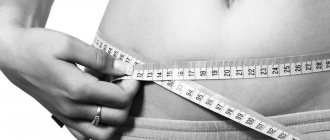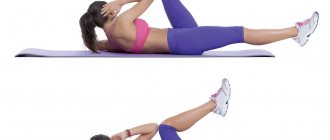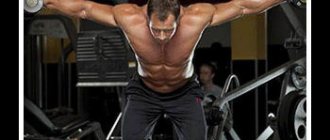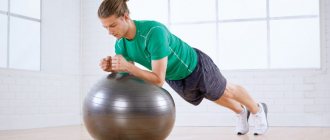Exercises with a jump rope are an excellent cardio exercise that allows you to raise your heart rate, warm up your muscles, and burn hundreds of calories. It is added as a warm-up to the main set of exercises, and is used as a basic element in fat-burning and cardio training. In boxing and crossfit, its help is invaluable, as it allows you to develop speed, endurance, coordination of movements, improves flexibility, and strengthens the cardiovascular system. Skipping - jumping rope, gives not only a good load on the muscles of the legs and calves, but also the thighs, buttocks, and makes the muscles of the arms and abs work. The benefits are invaluable even for professional athletes - they use the jump rope as a warm-up and muscle training.
TOP 6 exercises with a skipping rope
The most popular use of the exercise is as a warm-up. However, adding small changes to the classic jumping technique can provide much more benefits, becoming one of the main exercises.
Warm-up
Warm-up is a classic exercise that is used most often. They begin to learn jumping from him. Only after complete mastery and 100 jumps without a break during one set, should you proceed to more complicated options. The basic version consists of low, frequent jumping while skipping the rope under your feet. The lower and more often the jumps, the more effectively the exercise works the calf muscles, ankles and hips. When performing, the elbows are moved a few centimeters away from the body, the shoulders move freely, and the body is tense.
Low, frequent jumps provide a very good load on the calf muscles and upper thighs. The pulse is activated, the abdominal and arm muscles work.
Boxing jumps
In boxing, the jump rope is one of the main elements of training. Boxers need reaction speed, balance and coordination of movements. The “boxing jumps” exercise is not performed on both legs at the same time, but with each jump the body weight is transferred from one limb to the other. In this way, athletes constantly distribute the load between the two legs, which allows them to work twice as productive.
Before starting the exercise, it is recommended to perform it without a jump rope in order to catch the rhythm and try to maintain balance. Starting position - feet wider than shoulders. With each jump, the athlete transfers weight alternately to the right and left legs. The direction of movement is not forward, but to the sides. After each jump on the supporting leg, you need to place the second foot next to it. Lowering onto the ball of the foot. Then repeat the same on the second leg. It is recommended to repeat the exercises without a projectile until the process becomes completely comfortable and the body stops collapsing.
After this, you can take a jump rope. Beginners are advised to do the exercise as slowly as possible with their legs wide apart. For those who have already mastered it, place your feet as narrowly as possible, jumping in different directions almost on the spot.
Running with high hips
Required by athletes training explosive speed and endurance. It puts an extremely high load on the thigh muscles. High-intensity work greatly increases your heart rate and calorie burning rate. Therefore, it is suitable not only for professional athletes, but also for those who want to lose weight. It is much more difficult to perform than regular jumps, so beginners are advised to do it intermittently or include it in circuit training.
You need to start at a slow pace, the process will resemble running in place. You need to jump over the rope one by one on each leg, leaving the second one bent at the knee in the air, without putting it down. The foot does not fully land on the ground, but remains on the pad. The movements are light and smooth, not shocking. As soon as the pace is caught and the exercise becomes comfortable, you should gradually try to raise your legs higher with each jump, increasing the pace to the maximum. Ideally, your knees should be parallel to the floor at the top; no need to try to raise them higher.
Cross
When training involves complex development of the muscles of the whole body, the cross exercise is best suited. Together with the muscles of the legs, it perfectly develops the muscles of the chest, arms, and shoulders, but is one of the most difficult. To perform it, preparation and complete mastery of the classic version of jumps are necessary.
To make it easier to master the exercise, it is recommended to practice the technique in front of a mirror. The first thing you need to learn is how your hands should move. Take the starting position without the apparatus, your shoulders are relaxed, your elbows are located close to your body, approximately 15-20 cm from the body. The next movement is to cross your arms so that they are maximally spread in opposite directions. To get a large loop that you can easily jump through, your wrists should be as far outside your body as possible. It is important during the exercise to ensure that the arms do not change their height relative to the initial movement. This is important because arms down will cause the rope to catch on your legs; if you raise them high, it will catch on your head.
When the technique has been mastered, you can move on to training with a skipping rope. Take the projectile, take the starting position, then perform a normal jump. When the projectile is above your head, cross your arms to form a loop.
There is no need to try to perform several exercises in a row at once. Do a few single cross jumps to get a feel for how to do it correctly. Then practice tying them into a single chain. When tying, take your time; the movements of your hands should be light and smooth. You need to spread your arms when the rope goes over your head again. If this is done earlier or later, there will be a hitch due to changes in the size of the loop.
Rolling the rope backwards
Even beginners can do this exercise. It does not differ from the classic version except that the movement of the hands is performed not forward, but backward. The exercise perfectly develops coordination. Performing alternately basic and reverse jumps will allow you to harmoniously develop your body.
To prepare for the exercise, you should try rotating the rope backwards from the side of your body. This way your hands and wrist joints will get used to the non-standard way of twisting. When the reverse rotation does not cause discomfort, you can start jumping. First, do single jumps, trying to catch the rope with your heels to feel its movement. Then you can combine several jumps, later you should gradually increase the tempo. As with the classic version, it can be complicated, supplemented with running, high knees, cross, double jump.
Double Jumps
To begin learning this exercise, you should be confident in the correct basic technique. It is recommended for the athlete to do 180-250 classic jumps in one approach without a hitch in order to move on to double ones.
Here are the top tips for beginners to avoid mistakes. Try to adhere to them at the stage of learning the technique:
- You need to keep your body straight without folding or tucking your legs;
- the knees do not need to be bent completely, the jumps are the same as single jumps, only the second one is a little higher;
- arms should be relaxed, elbows parallel to the body at a distance of 20 cm, not bent at the elbows, shoulders down;
- You only need to twist your wrists.
Double jumps are one of the most difficult jumps, so they must be performed daily to perfect the technique. Special attention must be paid to the technique in order to completely eliminate errors during the study phase.
Mechanism of action
Jumping in place for weight loss is nothing more than a type of exercise to activate the whole body. The muscles most involved are the abdominals, legs, buttocks and thighs. In addition, the work of the respiratory and cardiovascular systems of the body is additionally stimulated.
Jumping on the spot to lose weight needs to be done regularly
Jumping in place is not something special or unique, but it helps to significantly strengthen the muscles of the lower extremities and the arch of the foot, in particular. Quite often, it is this area that remains poorly developed by athletes, which is the cause of injuries.
Contraindications to playing sports with a jump rope
Intense “jump rope” exercises give effective results, allow you to tone your muscles in a short time and lose a few extra pounds. However, there are a number of contraindications in which shock training is prohibited:
- with a lot of weight and at the stage of obesity, jumping is contraindicated due to too much stress on the joints;
- pregnancy, postpartum recovery period;
- varicose veins;
- vascular diseases;
- hyper and hypotension;
- diseases of the spine, bones and joints, rehabilitation period after injuries;
- eye diseases;
- chronic lung diseases, including asthma.
If your health worsens during or after exercise, you should consult a doctor. The exercise should not be performed until the causes are identified. It is also worth contacting your doctor if you have other chronic diseases.
Proper execution
In order to prevent various injuries and bruises, as before any other workout, a warm-up is needed here. Without warming up the muscles, you can “earn” various bruises, stretch marks, and the like.
Jumping in place should only be done after warming up
An approximate set of exercises that are great for achieving this goal is as follows:
- You need to sit down 30-40 times. Nothing complicated, but the effect is exactly what you need.
- Exercise "caterpillar". While standing still, you need to bend forward so that your hands reach the floor. Then “walk” with your upper limbs forward and take a lying position. Then the legs are included in the work, which should push the body to the starting position in the same small steps.
- Leaning on the back of a high chair, you need to perform 20-30 lifts and lowerings on your toes with your stomach pulled in.
Only after the muscles have sufficiently warmed up can you begin to exercise.
It is necessary to remember the technique of correctly performing the exercise:
- Shoulders should be down. Pull your stomach in and tighten your abs. The arms are lowered “at the seams”, but with slight tension.
- Next, using the efforts of the leg muscles, you need to push the body up.
- Then land softly on your feet, using additional springs from your knees.
- You need to keep your back straight, but not too tight.
There is nothing difficult in doing such activities. The main thing is the desire to jump.
What is useful for losing weight
Fat burning starts with increased blood circulation. In accelerating the pulse and accelerating blood flow, exercises with a skipping rope have few equals. That’s why this complex is so effective in fat-burning workouts.
To lose weight, it is necessary not only to start the fat burning process, but also to create a calorie deficit situation for the body. This means that the caloric content of the diet should be less than the energy that is spent during the day. The average dietary menu is 1200-1500 kcal, depending on the person’s initial parameters and goals. Jumping for an hour can burn out about 1,000 of them. The body will spend the rest of the calories on maintaining its own vital functions and household chores.
Exercises allow you to:
- form a beautiful hip line, pump up the leg muscles, increase their attractiveness;
- help quickly get rid of volume in the lower body;
- create a calorie deficit, which promotes weight loss throughout the body;
- tone muscles;
- speed up metabolism and fat burning process;
- reduce the appearance of cellulite;
- prevent depression, apathy, aggression and sudden mood swings on a diet by stimulating the production of dopamine, endorphin, serotonin and oxytocin - “happiness hormones”.
To maximize your weight loss benefits, it is best to use interval training. They can combine both intense jumps and other static exercises without long pauses, or do the jumps themselves at a fast and slow pace.
The benefits of jumping in place
Some experts compare the effectiveness of such sports with other activities. Here is one such comparison. Jumping can replace 13 minutes of swimming and a couple of kilometers of cycling.
Due to the intensity of movements, metabolism increases, the heart and lungs are trained, and blood circulation improves. There is an opinion that jumping is the prevention of varicose veins.
These exercises help burn fat and tighten a sagging belly. They will also correct the buttocks, thighs, and calves. For better results, jumping must be done in combination with other physical activities.
Training plan
To use the full effectiveness of the exercise, a beginner needs to reach the bar of an hour of intense training. In this case, much more calories are burned than with an hour of jogging and many other types of exercise. An hour of jumping sounds very difficult, but in fact the principle of increasing the load will help you quickly reach this level.
Training Approaches Duration of jumps in minutes Rest after approach in minutes 1 3 3 1 2 3 3.5 1 3 3 4 1 4 4 4 1 5 5 4.5 1 6 5 4.5 1 7 5 4.5 1 8 5 5 1.5 9 5 5 1.5 10 5 5 1.5 11 6 5 1.5 12 6 5.5 1.5 13 6 5.5 1.5 14 6 5.5 1.5 15 6 6 2 16 6 6 2 17 7 6 2 18 7 6 2 19 8 6 2 20 8 6 2
A set of exercises with a skipping rope will help you quickly get your body in shape, tighten your muscles, and lose excess weight. It can be used by athletes to develop speed, endurance and reaction. It will be effective for children and women after pregnancy for training the vestibular apparatus. Daily intense exercise and spending thousands of kilocalories will help you quickly achieve results in losing weight, and classes can be done at home, without wasting time going to the gym.
How often should you jump?
To lose excess weight by jumping rope, you should carefully approach the development of the program. There is a special weekly jumping table that is recommended to be followed to achieve the desired results. The program looks like this:
· Monday. The training should be carried out in the morning and evening for 15 minutes.
· Tuesday. The duration of morning and evening workouts increases to 16 minutes.
· Wednesday. Duration remains at the same level.
· Thursday. Morning workout should be 17 minutes, evening workout – 16 minutes.
· Friday. Both workouts should last at least 17 minutes.
· Saturday. Both workouts are 18 minutes long.
Sunday remains a day off. If desired, you can extend the schedule, gradually increasing the duration of classes. It is only important to monitor your own feelings from training. If at any point it becomes bad, it is better to slow down with increasing the load and return to the initial stage.










